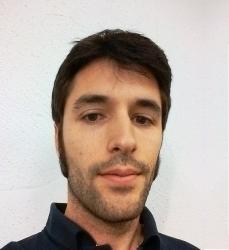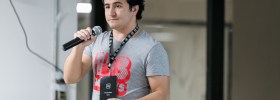Designer Barbara Knickerbocker-Beskind is 91 years old, works for a company in Silicon Valley and is considered an employee like any other.
When Barbara Knickerbocker-Beskind saw David Kelley in 2013 on the television show 60 minutes, she thought she could help the man out. Barbara was then 89 years old and had an entire lifetime of experience as an Occupational Therapist. That man, David Kelley, was the founder of the design firm of IDEO which designed the first mouse for Apple, as well as the Palm V, and other products for brands such as Coca-Cola and Ford.
IDEO currently has more than 600 employees and is located in different cities in the United States, London, Munich, and in Asian economies such as Tokyo, Shanghai, and Singapore. Back to what we were saying: Barbara saw David Kelley and thought she could help him out. Due to the words used on television by the founder of the company, Barbara believed that his company accepted and truly respected people with varied fields of experience.
Barbara’s experience was definitely very different from anybody else working at IDEO. Her professional work as an Occupational Therapist, saw her support the rehabilitation of handicapped people or patients with different types of injuries, which also included using her original schooling in Arts and Design which she completed in 1945. This was paired together with the art classes she had attended in 1997 to learn techniques that could help her drawings.
Barbara Knickerbocker-Beskind could indeed draw. She practiced this discipline to create the designs of her inventions. As an Occupational Therapist she had had to deal with multiple challenges throughout her professional life, and some of them required a little more ingenuity in order to overcome the existing instruments and resources. This led to her creating her own devices, such as a square pillow that she patented aimed at protecting children when they fell.
So Barbara got to work and wrote a letter to Kelley which she sent via the normal postal system. The designer confessed to the BBC that she didn’t use the computer because her eyes didn’t allow her to. She got an answer in a week: she was invited to the offices to meet part of the IDEO team. At the time the company was developing a series of designs aimed at helping the elderly.
When Barbara arrived at the offices of IDEO, with the idea that she would have a conversation with a couple of people, she found herself in front of 30 or 35 designers and engineers waiting for her to speak. From that moment the now 91 year old woman became a consultant for the equipment and design of products and services aimed at the elderly population and people with reduced vision.
Every Thursday Barbara takes the train to the offices of IDEO. She gets there at 10am and sits down. Individuals set up meetings with her and ask her for advice. She highlights the fact that there is an “extremely collaborative” tone in the environment, and notes that she is treated just the same as everybody else despite the fact that they are six or seven decades younger than her, and the fact that many of them have doctoral or master’s degrees.
Her words are respected because of her experience. Experience that began a very long time ago, especially during the period of the Great Depression when her father taught her how to notice things and her mother taught her how to be creative. Necessity is the mother of creativity, and during that time period there was no money for buying many things; Barbara had to invent them.








